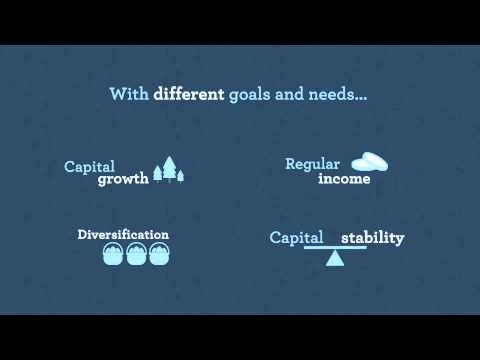Diversifying Your Portfolio With Real Estate And Infrastructure
Post on: 30 Апрель, 2015 No Comment

Real estate is undoubtedly a significant element of asset allocation. and should form a component of any institutional or personal investment portfolio. Also increasing in importance is infrastructure, which has similar advantages to real estate. Based on research at the University of Regensburg in Germany, this article will consider some of the main asset allocation issues in this context. (For related reading, see Diversification: It’s All About (Asset) Class. )
Both real estate and infrastructure constitute attractive investments for risk-averse investors, especially during bear markets. There are similarities and differences between the two, and you can construct a truly optimal portfolio by fully exploiting them. (For more on optimizing portfolios, see Achieving Optimal Asset Allocation. )
Diversification Through Real Estate and Infrastructure
The diversification benefits of direct and indirect real estate investments are well known, and diversification’s role in institutional portfolios has been investigated extensively. The different correlations to those of stocks and bonds are extremely helpful for avoiding portfolio volatility.
In the U.S. there is a huge need to invest in and improve the infrastructure in many respects, so there is plenty of potential in the market. Pretty much all investors should take advantage of this potential to diversify more effectively than ever and in an extremely promising sector.
In the past, infrastructure has received relatively less attention, along with other alternative assets such as commodities and private equity. There has been a move away from the old-school conventional portfolios comprising equities, bonds, cash and real estate.
The allocation to real estate in particular could be affected if alternative investments significantly diversify returns from conventional investments. In fact, infrastructure has become a focus of attention and found its way into institutional portfolios, and to a lesser extent, private ones. (For more on asset allocation, see Five Things To Know About Asset Allocation. )
What makes infrastructure so appealing is that it seems quite similar to direct real estate in terms of big lot sizes and illiquidity, but also offers general stability and stable cash flows. The research on infrastructure lags behind that of real estate, and Tobias Dechant and Konrad Finkenzeller from Regensberg have attempted to bridge this gap.
Portfolio Optimization with Real Estate and Infrastructure
This research project, and earlier work in the field, demonstrates that direct infrastructure is an important element of portfolio diversification. and that firms tend to overallocate to real estate if they do not also invest in infrastructure. This is an important finding given that infrastructure is really helpful for risk-averse investors — especially in equity market downturns.
There is considerable variation in the recommended, relative amounts that should be invested in these two asset classes. The range extends from zero to as high as 70% (mainly in real estate), depending on the time frame, state of the markets and the methods used to derive the optimum.
The maximum total amount usually recommended for real estate and infrastructure allocations is about 25%, which is considerably higher than actual institutional allocations. It is important to note that efficient allocations in practice depend on numerous factors and parameters, and no specific mix proves to consistently superior. (For related reading, see Asset Allocation: The First Step Towards Profit. )

The blend of real estate and infrastructure is also controversial, but one study by Terhaar et al. (2003), for instance, suggests an even split. Some experts believe that about 5% is sufficient for each. In crisis periods, this can be three or even four times higher.
Another important finding is that real estate and infrastructure may be more useful in terms of diversification than through actual returns. Given the controversy on effective asset allocation and the turbulence in real estate markets, this is a major issue. The latter highlights the benefits of using not only real estate, but also infrastructure.
Also significant is the revelation that the targeted rate of return impacts on the appropriate level of real estate. Investors with higher portfolio return targets (who wish to earn more, but with more risk), may wish to devote less to real estate and infrastructure. This depends a lot on the state of these markets in relation to the equity markets in terms of whether the latter is in an upward or downward phase. (Asset allocation takes care of nearly 94% of your portfolio’s investment profile. For more, see Asset Allocation: One Decision To Rule Them All. )
The exact allocations to real estate and infrastructure depend on various parameters. Apart from the expected rate of portfolio return mentioned above, there is also the issue of how risk is defined. Other relevant factors include attitudes towards infrastructure in general, and how this relates to other alternative investments. In practice, these allocation decisions are complex, and higher or lower optima are therefore possible for different investors at different times.
Conclusions
If there is one thing that remains the top priority for all investors it’s having a well diversified portfolio. There is simply no substitute for this, but there is a lot of untapped potential in the market. Real estate investment, but also infrastructure, can play a vital role in optimizing portfolios. This mainly pertains to institutions. but also for private investors. Private investors can generally benefit from more diversification. (For related reading, see Choose Your Own Asset Allocation Adventure. )














